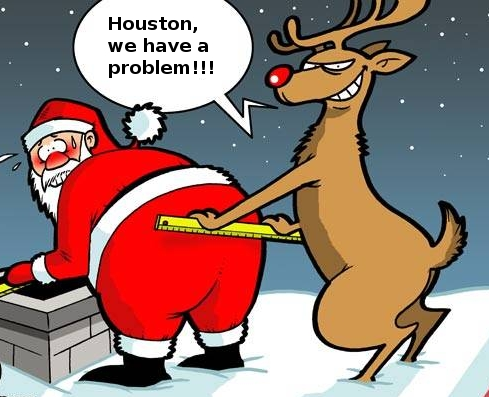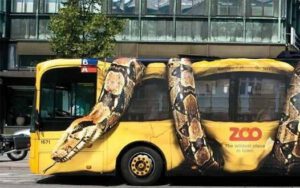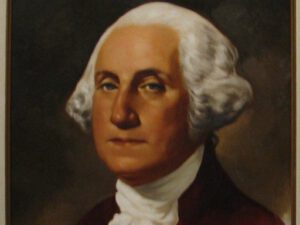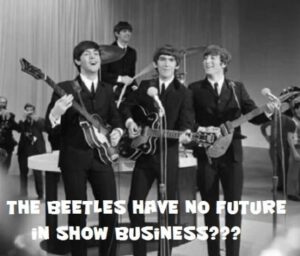21 Weird and Interesting Christmas Facts
11 Xmas Keeps The Christ In Christmas
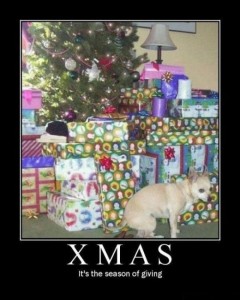 Acronyms, and other methods of shortening words or phrases are a fairly recent development is written language. But they have been around for a long time in many different and varying forms. One of those forms is the shortening of Christmas to Xmas.How many people are unhappy to see Xmas instead of Christmas? Some people see it as lazy and an incorrect method to address the festive season. In one episode of Futurama they even made fun of the shortening method by saying that the festive season was known as Xmas in the future, not Christmas. But this is the thing. Xmas is one of the correct ways of referring to Chrsitmas, and has been in use for a very, very long time.Xmas has been used since the year 1021 when monks in England were transcribing classical text into old English. They used X in place of Christ because X stands for the Greek letter Chi, the starting letter of Χριστός, or “Christ” in Greek. While the ‘mas’ is the old English word of mass, hence Christ mass. The shortened version of Christmas first appeared in the Oxford English Dictionary in 1551.
Acronyms, and other methods of shortening words or phrases are a fairly recent development is written language. But they have been around for a long time in many different and varying forms. One of those forms is the shortening of Christmas to Xmas.How many people are unhappy to see Xmas instead of Christmas? Some people see it as lazy and an incorrect method to address the festive season. In one episode of Futurama they even made fun of the shortening method by saying that the festive season was known as Xmas in the future, not Christmas. But this is the thing. Xmas is one of the correct ways of referring to Chrsitmas, and has been in use for a very, very long time.Xmas has been used since the year 1021 when monks in England were transcribing classical text into old English. They used X in place of Christ because X stands for the Greek letter Chi, the starting letter of Χριστός, or “Christ” in Greek. While the ‘mas’ is the old English word of mass, hence Christ mass. The shortened version of Christmas first appeared in the Oxford English Dictionary in 1551.12 Toilet Brushes Were Used To Make One Of The First Fake Christmas Trees
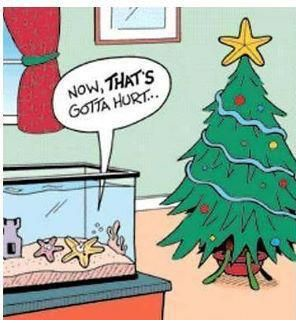 Have you ever seen a toilet brush Christmas tree? No. Think again. There’s a very high chance that you have seen a toilet brush Christmas tree, and never ever realized it. So now I guess that you are wondering where you might have seen one. Well, they come in boxes, and are sold as fake Christmas trees. Well, not exactly anymore, but at one stage they were.Love them or hate them, they seem like they are here to stay. We are talking about fake Christmas trees. As time has gone on many people have opted for the convenient, and much easier option of artificial over real tree. While some will argue that using a fake tree isn’t in keeping with the spirit of Christmas, in a busy society ease of use rules. Now I’m betting that most people would think that artificial Christmas trees are a relatively new feature to the festive season. When do you think the first artificial Christmas tree was manufactured? Twenty years ago? Fifty years ago? Surely not eighty years ago? We can actually go back over 125 years, right back to 1886, to when the first fake Christmas tree was made.The worlds oldest, and first fake Christmas tree was manufactured in London in 1886. They used green raffia, which is a twine more commonly used to make grass hula skirts. The tree stood only 14 inches (35.56 cm) tall, and amazingly is still in use today. Other varieties were made in the late 19th century in Germany using goose feathers dyed green that were attached to a wooden pole. It wasn’t until much later that toilet brushes made their appearance in the industry.Much later in the US the Adidas Brush Company branched out into Christmas tree manufacturing. They used the same machinery that they used to make toilet brushes. The trees they made were much more popular as they could hold much heavier decorations, and were far less flammable than the popular feather trees before them.<source><source>
Have you ever seen a toilet brush Christmas tree? No. Think again. There’s a very high chance that you have seen a toilet brush Christmas tree, and never ever realized it. So now I guess that you are wondering where you might have seen one. Well, they come in boxes, and are sold as fake Christmas trees. Well, not exactly anymore, but at one stage they were.Love them or hate them, they seem like they are here to stay. We are talking about fake Christmas trees. As time has gone on many people have opted for the convenient, and much easier option of artificial over real tree. While some will argue that using a fake tree isn’t in keeping with the spirit of Christmas, in a busy society ease of use rules. Now I’m betting that most people would think that artificial Christmas trees are a relatively new feature to the festive season. When do you think the first artificial Christmas tree was manufactured? Twenty years ago? Fifty years ago? Surely not eighty years ago? We can actually go back over 125 years, right back to 1886, to when the first fake Christmas tree was made.The worlds oldest, and first fake Christmas tree was manufactured in London in 1886. They used green raffia, which is a twine more commonly used to make grass hula skirts. The tree stood only 14 inches (35.56 cm) tall, and amazingly is still in use today. Other varieties were made in the late 19th century in Germany using goose feathers dyed green that were attached to a wooden pole. It wasn’t until much later that toilet brushes made their appearance in the industry.Much later in the US the Adidas Brush Company branched out into Christmas tree manufacturing. They used the same machinery that they used to make toilet brushes. The trees they made were much more popular as they could hold much heavier decorations, and were far less flammable than the popular feather trees before them.<source><source>13 Santa Used To Be Thin And Didn’t Always Have A Beard
One of the most iconic images at Christmas time is the unmistakeable image of Santa. Dressed in his red suit, he is quite the fat bearded man. But this has not always been the case. Prior to the 19th century Santa Clause was actually thin and had no beard. As with many characters and events, they undergo an almost constant evolutionary process, and the jolly fat man is no exception.
In the 17th century Dutch settlers brought Santa to the Americas. The version of Santa they introduced was of the typical Dutch winter figure Sinterklaas. This early version of Santa Claus was tall, thin, dignified and had no beard. It was a completely alien image to what we are now used to. So if he was thin and had no beard, what happened to him?
Well, you can rest assured that he didn’t go on a bender or have a mid life crisis. We can thank artist and political cartoonist Thomas Nast who added a beard and excessive obesity to Santa in the Harper’s Weekly late in the 19th century.
14 Which Is Greener? A Real Or Fake Christmas Tree?
 Every year around the world, on December 25, people of the Christian faith celebrate Christmas. Part of that celebration, and a focal point in the lead up to Christmas day has been the Christmas tree. The tree is traditionally a pine and is decorated. Over recent years many people have been opting to buy fake, plastic and reusable trees. There could be many reasons why this has been happening. For instance, there is the hassle of collecting a tree each year and then there is the necessary disposal of the tree following Christmas. Some people on the other hand invest in a fake tree to save the environment, believing that by buying a plastic Christmas tree instead of harvesting a living pine they are doing the environment a favour. But are they? Are fake Christmas trees greener, better for the environment than living trees?
Every year around the world, on December 25, people of the Christian faith celebrate Christmas. Part of that celebration, and a focal point in the lead up to Christmas day has been the Christmas tree. The tree is traditionally a pine and is decorated. Over recent years many people have been opting to buy fake, plastic and reusable trees. There could be many reasons why this has been happening. For instance, there is the hassle of collecting a tree each year and then there is the necessary disposal of the tree following Christmas. Some people on the other hand invest in a fake tree to save the environment, believing that by buying a plastic Christmas tree instead of harvesting a living pine they are doing the environment a favour. But are they? Are fake Christmas trees greener, better for the environment than living trees?The simple answer is the real Christmas tree is greener for the environment than the fake one. A firm in Montreal conducted one of the most in depth studies ever to determine the green credentials or real verses fake. In the study they took into account things such as the greenhouse emissions used in production of both, and the expected lifetime of fake trees. Their conclusion was that for a fake tree to be more environmentally friendly than a real tree it would need to be used at least twenty years in a row. Given the fact that most people would not keep a tree for that length of time it makes a real one a better option.
But to use a real Christmas tree means that it will need to be cut down, right? It sure does. But, the vast majority of Christmas trees are grown as crops and harvested for the purpose of the festive season. Once the tree has been harvested a new batch is planted in its place ready for future use, which has another useful environmental outcome. While the tree is growing it is storing carbon and combating the effect of global warming.
15 How Fast Does Santa Travel And How Does He Fit In Chimneys?
 How fast does Santa travel, and how on earth does he fit down a chimney? Perhaps you have wondered this or had a young and inquisitive child ask those questions of you. Surprisingly there is an answer.We know this is hardly a ground breaking or inspiring fact, but it is worth sharing, especially for those with young children. What do you do when you have a bit of spare money and a lot of free time on your hands? You solve the real perplexing questions of the world, such as how fast does Santa travel when he delivers presents on Christmas eve, and how can Santa fit down a chimney. This is what Fermilab did, and they used physics to not only determine his speed, but also prove he can fit down a chimney.So, I bet you are wondering just how fast Fermilab has worked out that Santa travels on his trip around the world. They worked out, through rough estimates and averages, that there are about 800 million households to visit on Christmas eve, and the total distance to travel to all of the houses would be approximately 160 million kilometres, which if further than the Earth is from the sun. Secondly they pointed out that due to the Earths rotation and the international date line, that there are actually 34 hours in which Santa can deliver all of his presents. What speed does this leave us with? They reason that he must travel at close to the speed of light, and it has connections with him fitting down the chimney. Travelling at that speed means he will deliver all of the presents in around 500 seconds, leaving him with plenty of time to feast on cookies and milk.Travelling at nearly the speed of light has some problems, as they point out. One of the problem is the friction caused by travelling through the atmosphere at such fast speeds. As they point out he should burn up, but maybe he has protection like space shuttles. Despite the disadvantages it does have some advantages, such as preventing anta from aging and also allowing Santa to fit down chimneys. With Santa fitting down the chimney we can thank the theory of relativity.
How fast does Santa travel, and how on earth does he fit down a chimney? Perhaps you have wondered this or had a young and inquisitive child ask those questions of you. Surprisingly there is an answer.We know this is hardly a ground breaking or inspiring fact, but it is worth sharing, especially for those with young children. What do you do when you have a bit of spare money and a lot of free time on your hands? You solve the real perplexing questions of the world, such as how fast does Santa travel when he delivers presents on Christmas eve, and how can Santa fit down a chimney. This is what Fermilab did, and they used physics to not only determine his speed, but also prove he can fit down a chimney.So, I bet you are wondering just how fast Fermilab has worked out that Santa travels on his trip around the world. They worked out, through rough estimates and averages, that there are about 800 million households to visit on Christmas eve, and the total distance to travel to all of the houses would be approximately 160 million kilometres, which if further than the Earth is from the sun. Secondly they pointed out that due to the Earths rotation and the international date line, that there are actually 34 hours in which Santa can deliver all of his presents. What speed does this leave us with? They reason that he must travel at close to the speed of light, and it has connections with him fitting down the chimney. Travelling at that speed means he will deliver all of the presents in around 500 seconds, leaving him with plenty of time to feast on cookies and milk.Travelling at nearly the speed of light has some problems, as they point out. One of the problem is the friction caused by travelling through the atmosphere at such fast speeds. As they point out he should burn up, but maybe he has protection like space shuttles. Despite the disadvantages it does have some advantages, such as preventing anta from aging and also allowing Santa to fit down chimneys. With Santa fitting down the chimney we can thank the theory of relativity.As Santa is travelling at nearly the speed of light points of reference change. Imagine looking at the chimney, both from your point of view and that of Santa’s. Focus on the front and the rear of the chimney. From our point of view as Santa is going so fast he squashes down in appearance, to be much thinner than the chimney. This is because we see both the front and rear of the chimney at the same time. However, from his perspective he is wider if he sees both the front and rear of the chimney at the same time, and he won’t fit. But don’t worry about this because Santa won’t see both the front and rear of the chimney at the same time. As he sees the front he will begin to enter. When he sees the rear it will allow him to slide down and deliver the presents.
If this is a little confusing, Fermilab actually have tables and diagrams to help explain it in the source below.

